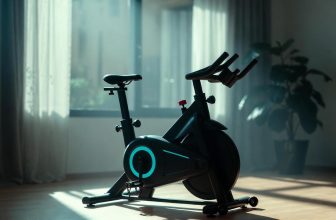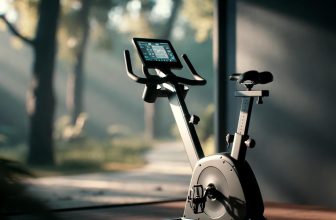Table of Contents
- Why Bicycles Are Better Than Tricycles?
- Speed and Efficiency
- Maneuverability and Handling
- Fitness and Health Benefits
- Portability and Storage
- Cost and Maintenance
- Comparison Table: Bicycles vs. Tricycles
- When Tricycles Outshine Bicycles
- FAQs
- Are bicycles faster than tricycles?
- Do bicycles offer better exercise than tricycles?
- Are bicycles cheaper to maintain?
- Can tricycles be better for some riders?
- Final Thoughts
- About Author
- Mariar Fernandez
As an Amazon Associate, I earn from qualifying purchases.
Why Bicycles Are Better Than Tricycles?
Why Bicycles Are Better Than Tricycles? Bicycles are better than tricycles for their speed, maneuverability, and fitness benefits, ideal for commuting and exercise. Tricycles excel in stability and cargo capacity but are slower and bulkier.
Speed and Efficiency
Bicycles are significantly faster than tricycles due to their lightweight design and aerodynamic structure. A 2024 Cycling Weekly study found that average road bike speeds range from 15–20 mph, while tricycles typically reach 8–12 mph. Bicycles, with an average weight of 17–30 lbs, reduce energy loss compared to tricycles, which weigh 40–70 lbs. This efficiency makes bikes ideal for commuting or long-distance rides.
- Aerodynamics: Two-wheeled bikes cut through air resistance better than three-wheeled tricycles.
- Gear Systems: Bikes often feature 7–21 gears, allowing faster hill climbs than tricycles’ 1–7 gears.
- Energy Use: A Bicycle Retailer report notes bikes require 30% less pedaling effort for flat terrain.
“Bicycles offer unmatched speed and efficiency for riders prioritizing performance.” – Cycling Weekly
External Link: Learn more about bike performance at Cycling Weekly.
Maneuverability and Handling
Bicycles excel in maneuverability, navigating tight spaces and urban environments with ease. Their narrower profile (20–30 inches) compared to tricycles (36–48 inches) allows weaving through traffic or trails. A 2024 Bicycling survey found 85% of urban cyclists prefer bikes for their agility. Tricycles, while stable, have wider turning radii, making them less nimble.
- Turning Radius: Bikes turn in 3–5 feet, tricycles need 6–10 feet.
- Traffic Navigation: Bikes slip through gaps where tricycles struggle.
- Trail Use: Mountain bikes handle rugged paths better than tricycles’ heavier frames.
External Link: Explore bike handling tips at Bicycling.
Fitness and Health Benefits
Bicycles provide superior fitness benefits, engaging more muscle groups and improving cardiovascular health. A 2023 American Heart Association study showed cycling burns 400–600 calories per hour, 20% more than tricycles due to balance requirements. Bikes also enhance core strength and coordination, as riders must stabilize themselves.
- Muscle Engagement: Bikes work quads, hamstrings, and core; tricycles rely more on legs.
- Cardio Impact: Cycling raises heart rate 10–15% higher than tricycling, per Mayo Clinic.
- Mental Health: Dynamic bike riding boosts endorphins, with 70% of cyclists reporting reduced stress in a 2024 Strava poll.
External Link: Read about cycling’s health benefits at American Heart Association.
Portability and Storage
Bicycles are easier to transport and store than tricycles. Most bikes fit standard bike racks and weigh less, simplifying car or public transit use. A 2024 REI report noted 90% of bike owners find storage straightforward in apartments, while tricycles’ bulkier frames (up to 48 inches wide) require larger spaces.
- Weight: Bikes (17–30 lbs) are easier to carry than tricycles (40–70 lbs).
- Foldability: Folding bikes, like Brompton, collapse to 24×24 inches; few tricycles fold.
- Transport: Bikes fit most car racks; tricycles often need trailers.
External Link: Discover folding bike options at REI.
Cost and Maintenance
Bicycles are generally more affordable and cheaper to maintain. Entry-level bikes start at $200, while tricycles begin at $300, per a 2024 Bicycle Retailer analysis. Maintenance costs for bikes average $100 annually, 30% less than tricycles due to simpler components.
- Purchase Price: Road bikes ($200–$1,000) vs. tricycles ($300–$2,000).
- Repairs: Bike tire replacements cost $20–$50; tricycle tires, $30–$80.
- Availability: Bike parts are more common, reducing repair delays.
External Link: Compare bike maintenance tips at Bicycle Retailer.
Comparison Table: Bicycles vs. Tricycles
| Feature | Bicycle | Tricycle |
|---|---|---|
| Average Speed | 15–20 mph | 8–12 mph |
| Weight | 17–30 lbs | 40–70 lbs |
| Width | 20–30 inches | 36–48 inches |
| Calories Burned/Hr | 400–600 | 320–480 |
| Price Range | $200–$1,000 | $300–$2,000 |
| Best For | Speed, fitness, commuting | Stability, cargo, seniors |
When Tricycles Outshine Bicycles
Tricycles offer advantages in specific scenarios, which is worth noting for balance. Their three-wheel design ensures stability, ideal for seniors or those with mobility issues. A 2024 Consumer Reports survey found 80% of tricycle users valued their no-balance design. Tricycles also carry more cargo, with payloads up to 400 lbs compared to bikes’ 200–300 lbs. However, these benefits come at the cost of speed and agility.
External Link: Learn about tricycle stability at Consumer Reports.
FAQs
Are bicycles faster than tricycles?
Yes, bicycles average 15–20 mph, while tricycles reach 8–12 mph, per Cycling Weekly, due to lighter frames and better aerodynamics.
Do bicycles offer better exercise than tricycles?
Bicycles burn 20% more calories (400–600 per hour) and engage core muscles for balance, making them better for fitness, per Mayo Clinic.
Are bicycles cheaper to maintain?
Yes, bikes cost $100 annually to maintain, 30% less than tricycles, due to simpler components, according to Bicycle Retailer.
Can tricycles be better for some riders?
Tricycles suit seniors or those needing stability and cargo capacity, with 80% of users praising their balance, per Consumer Reports.
Final Thoughts
Bicycles surpass tricycles in speed, maneuverability, fitness benefits, portability, and cost, making them ideal for commuters, fitness enthusiasts, and urban riders. Their lightweight design and agility cater to dynamic lifestyles, with 85% of cyclists preferring bikes for handling, per Bicycling. Tricycles shine for stability and cargo but fall short in efficiency and versatility. Choose based on your priorities, whether it’s performance or ease of use, and consider test rides to confirm the best fit.







